Just to the south of the old historic centre, between the Puerta Jerez and the Prado San Sebastian is a magnificently imposing stone building that looks as if it should be a Royal Palace, or at least the stately home of a major aristocrat, but which is currently the headquarters and main campus of the University of Seville.
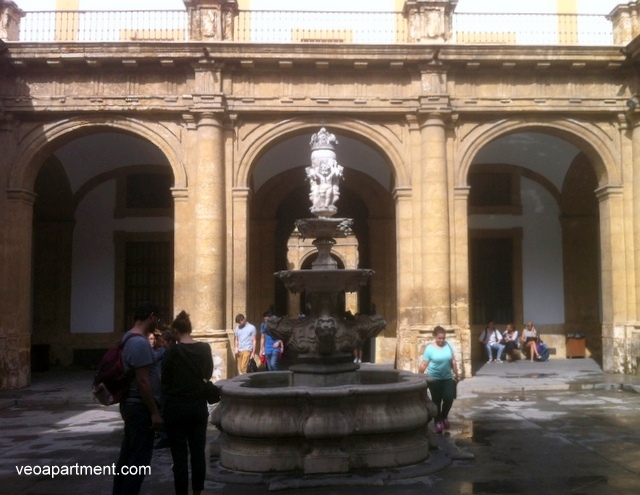
Main courtyard of the Old Tobacco Factory
But it wasn’t always thus, for this was originally the Royal Tobacco Factory, the largest industrial building in Europe in the 18th century, a visible declaration of the wealth and power of the city as the Golden Age came to its end.
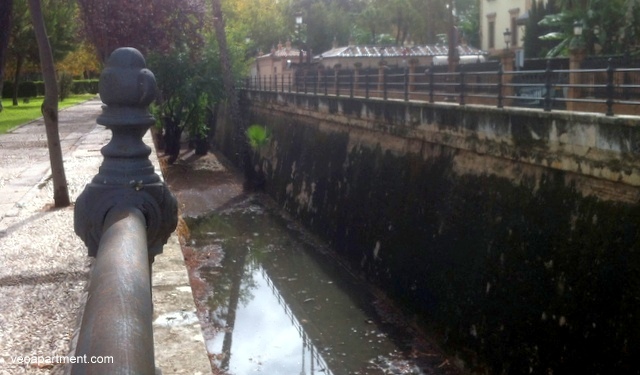
The Moat
Tobacco, as we all know, was discovered in the Americas by Columbus and was soon being imported and processed in Seville. In 1636, in order to centralise and control production, the first tobacco factory was built in what is now the Plaza Cristo de Burgos, but production soon outgrew the space, and in the early 18th century the decision was taken to build a new factory on a site outside the city wall known as “de las calaveras”, of the skulls, because it was once a Roman burial ground.
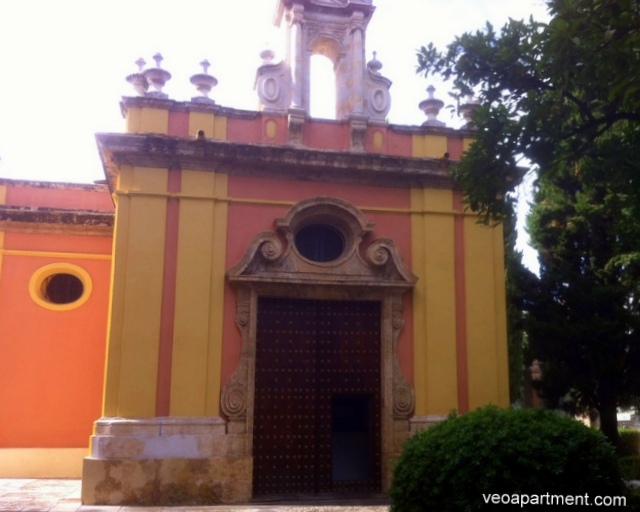
The old prison of the Royal Tobacco Factory
The original plans were drawn up in 1725 by Ignacio Sala, and work began on the foundations in 1728, but work proceeded only in fits and starts until the appointment of the Flemish Engineer Sebastián van der Borcht in 1750. Production began in 1758, and the building was completed in 1770. Initially, the main output was snuff, with some 170 mills being used to grind up the tobacco plants into powder, but with the rising popularity of cigars, part of the factory was converted for their production. Initially the workforce was all male, but by 1830 cigar production had become the work of women, who were paid less, were less troublesome, and made better quality cigars. In the 1880s, at the peak of production, 6,000 women were employed rolling cigars.
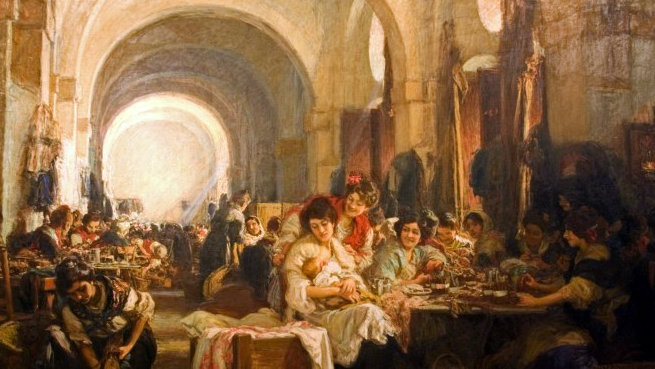
“Las Cigarreras” by Gonzalo Bilbao (Bellas Artes Museum)
It was this all-female workforce that inspired the French novelist Prosper Mérimée to write Carmen (published in 1845, and the basis of Georges Bizet’s opera of 1875). One of Seville’s most famous stories, Carmen is about a gypsy girl who works at the tobacco factory, seduces one of the guards, who finally kills her when she later jilts him for a matador. The story is, of course, one of the “seven basic plots”, but its depiction of the amorality of proletarian life and the free-spiritedness of its heroine were seen as shocking by many of its original middle-class Parisian audiences. Other reminders of Carmen around the city include the famous statue outside the bullring, on the spot where she meets her death.
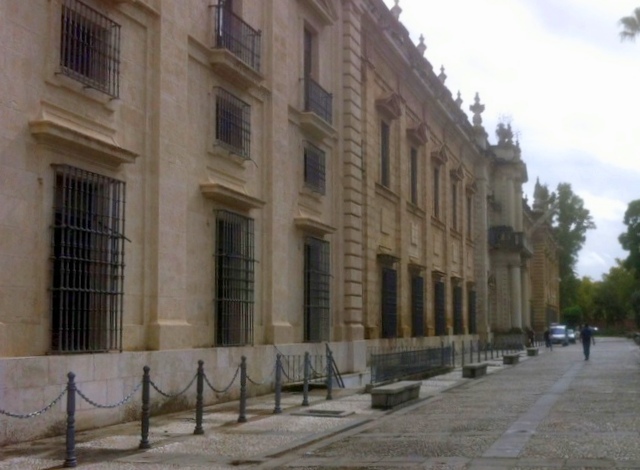
Facade of the Royal Tobacco Factory
The most obvious thing about the building today is that it’s big (185 metres by 147 metres, second only to the El Escorial Palace in Madrid), and obviously built to impress people with the wealth and power of the crown. You’ll also notice that it is protected on three sides by a moat (on the fourth side was the Tagarete stream, which has since been diverted to a new course), and by little turrets, where the guards would once have kept watch. The two free standing buildings at each end of the front facade are respectively a church and a prison (I’d like to be able to say that it’s now used for detentions, but alas, no), the twin forces of social control, all of which demonstrates the importance of tobacco in the economy of the 18th and 19th centuries.
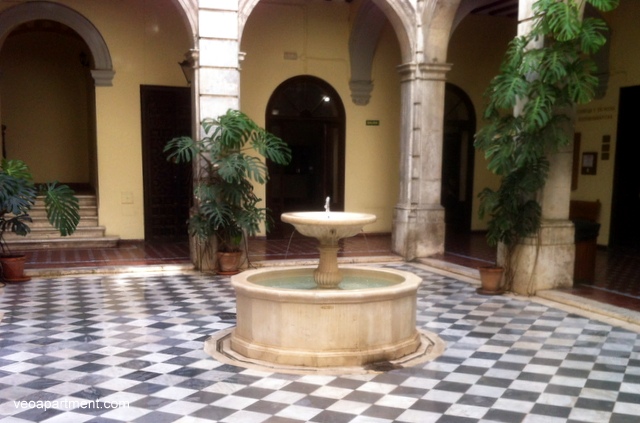
One of the inner courtyards
As it’s now a university it’s open to the public during the week in term-time, and there’s a signposted audioguide tour.
From one of our rental apartments in the Santa Cruz you can easily visit the Royal Tobacco Factory, and also explore the sites associated with Carmen and other famous operas.

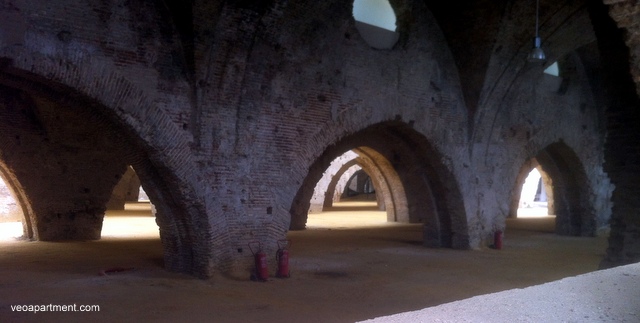


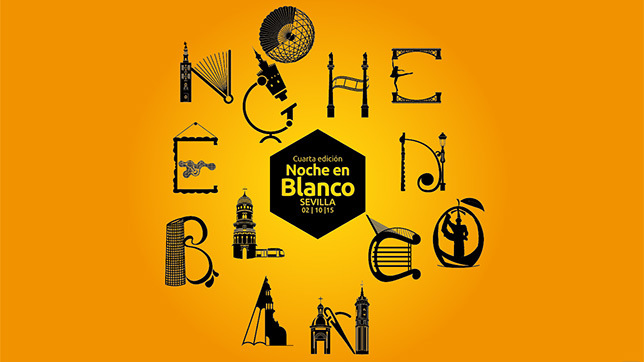
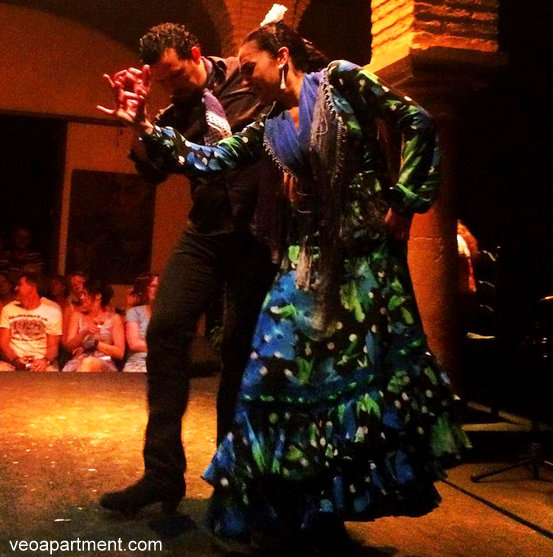
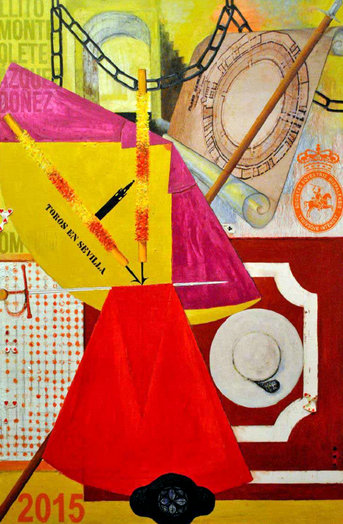 The Feria de San Miguel in Seville is the short bullfighting season in autumn that falls on or close to Saint Michael’s Day (Michaelmas) on September 29. “Saint” Michael is not, strictly speaking, a saint, but an angel, one of three Archangels whose names appear in the bible (the others are Gabriel and Rafael). When taking time out from being commander of the heavenly hosts, he’s the patron saint of, among others, police officers, fire fighters, the military and paramedics, and also, more prosaically, of grocers (but not of bullfighters).
The Feria de San Miguel in Seville is the short bullfighting season in autumn that falls on or close to Saint Michael’s Day (Michaelmas) on September 29. “Saint” Michael is not, strictly speaking, a saint, but an angel, one of three Archangels whose names appear in the bible (the others are Gabriel and Rafael). When taking time out from being commander of the heavenly hosts, he’s the patron saint of, among others, police officers, fire fighters, the military and paramedics, and also, more prosaically, of grocers (but not of bullfighters).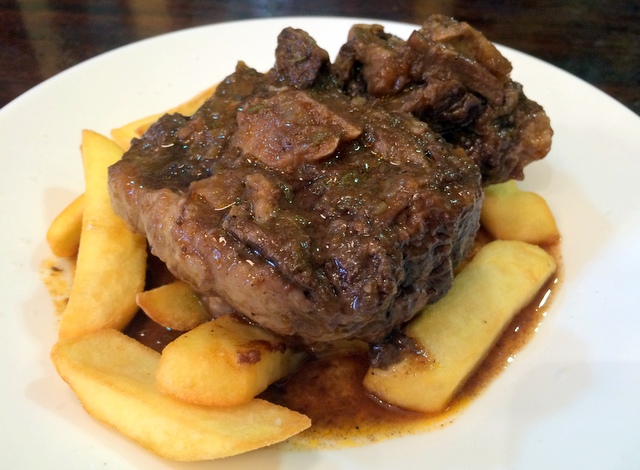 cola de toro (oxtail)
cola de toro (oxtail)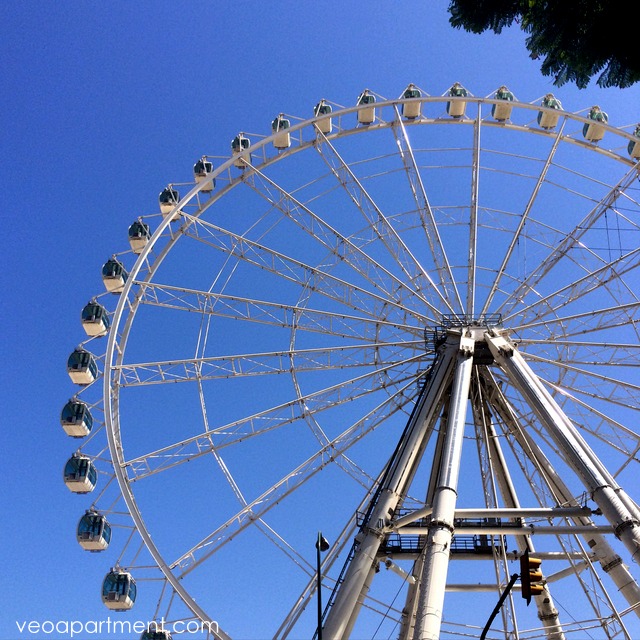 the Mirador Princess
the Mirador Princess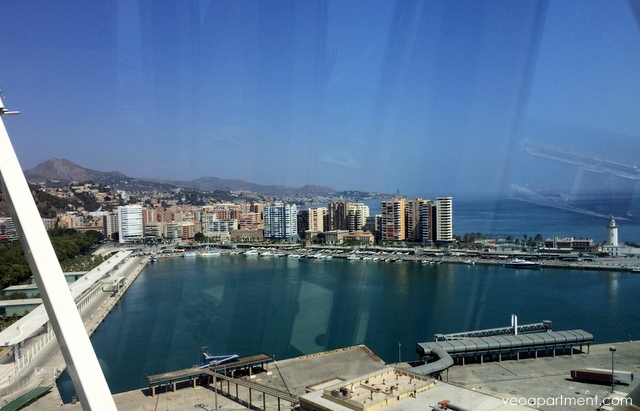 view of Muelle Uno from atop the Wheel
view of Muelle Uno from atop the Wheel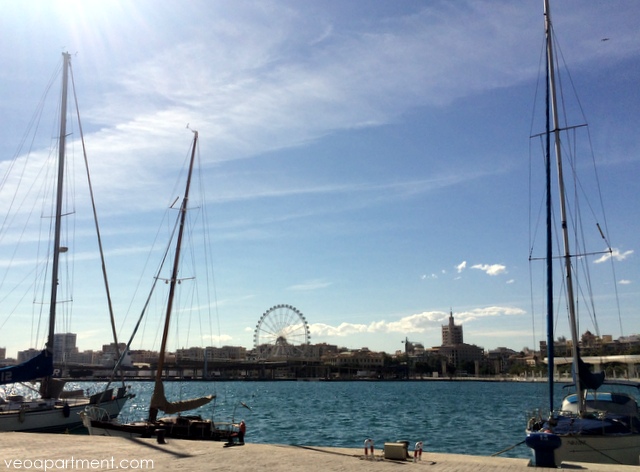 view of the Wheel from Muelle Uno
view of the Wheel from Muelle Uno